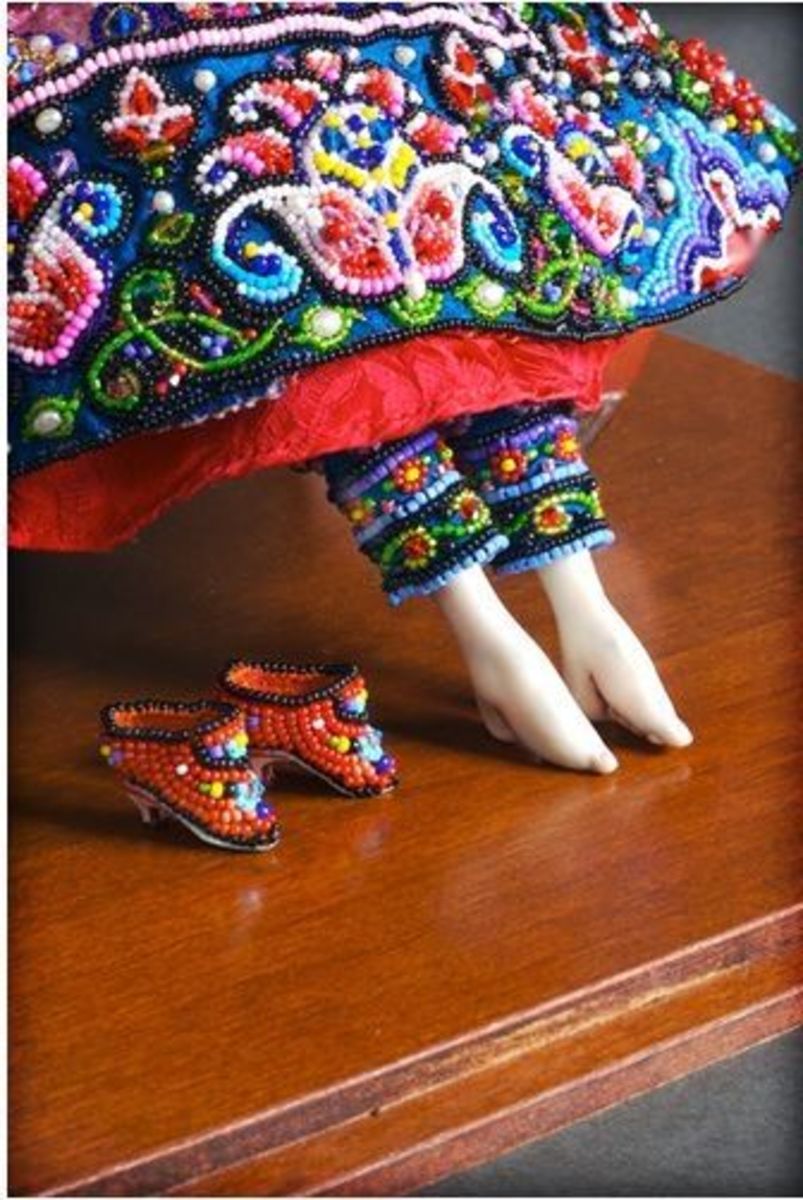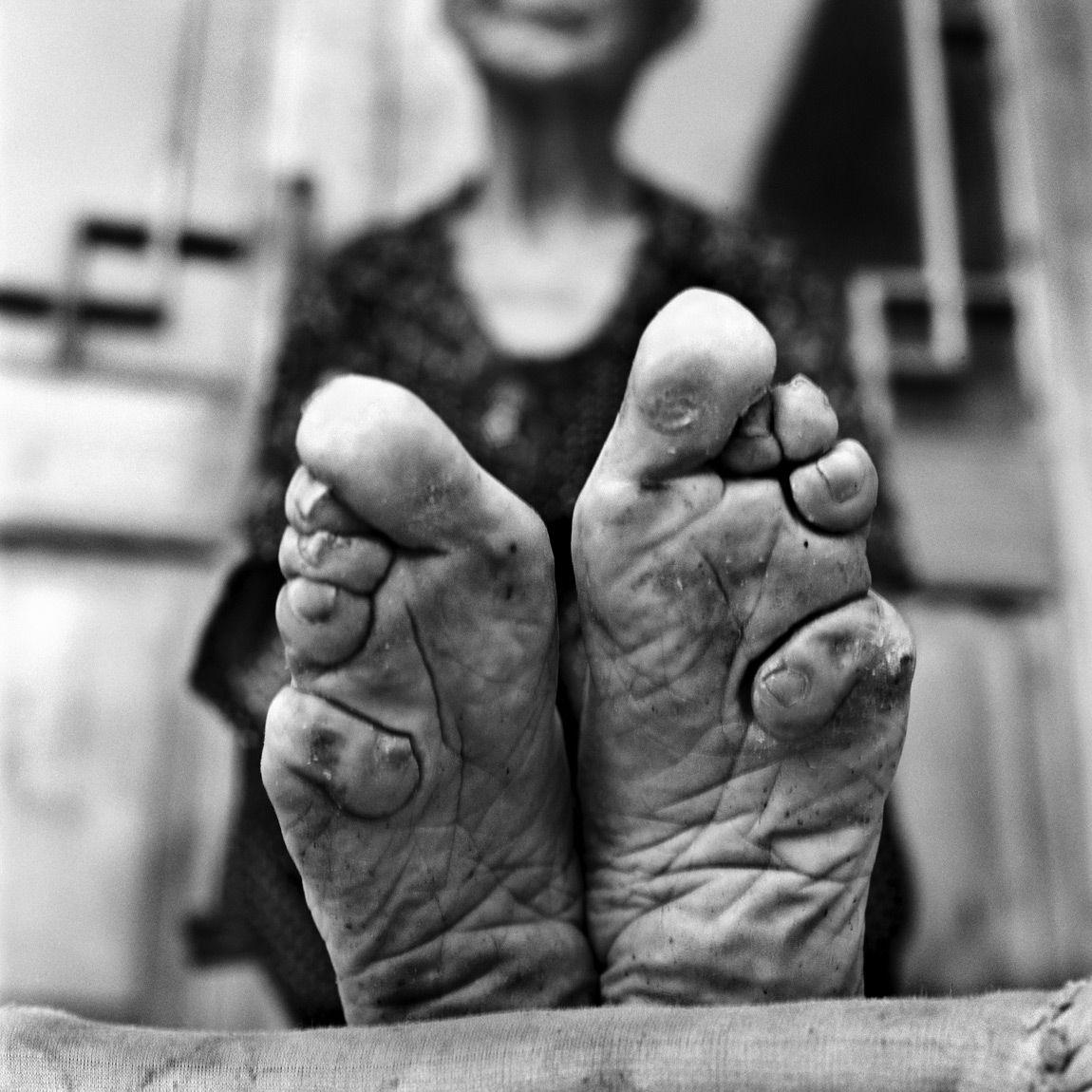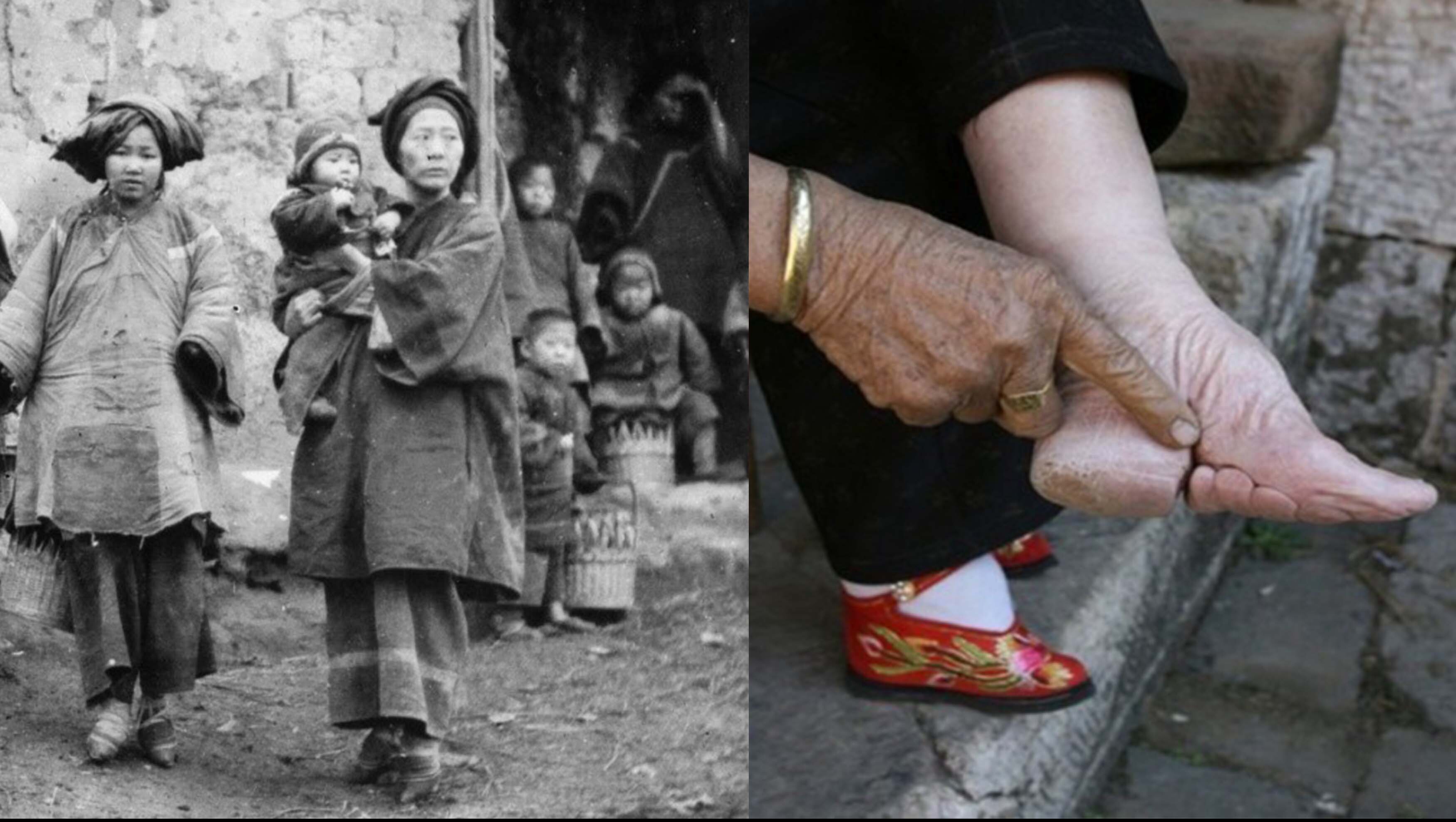Chinese Foot Binding: Unraveling A Painful Legacy
Table of Contents
- Introduction: Unveiling a Centuries-Old Practice
- The Origins and Evolution of Chinese Foot Binding
- The Grueling Process: How Feet Were Bound
- Lotus Feet: A Symbol of Beauty and Status
- The Profound Impact: Physical and Social Consequences
- Foot Binding as a Cultural Practice and Symbol of Oppression
- The Movement Towards Abolition
- Echoes of the Past: The Last Living Women with Bound Feet
- Beyond the Physical: Lessons from Foot Binding
- Conclusion: A History That Demands Reflection
Introduction: Unveiling a Centuries-Old Practice
Chinese foot binding (Chánzú), was a custom that left an indelible mark on the lives of millions of women across China for over a millennium. This deeply entrenched cultural practice involved the deliberate and excruciating process of breaking and tightly binding the feet of young girls, fundamentally altering their shape and size. Far from being a mere aesthetic choice, it was a complex phenomenon intertwined with societal expectations, economic aspirations, and the very definition of femininity in imperial China.
The practice, which began around the 10th century and persisted until its eventual ban and decline in the 20th century, transformed ordinary feet into what were known as "lotus feet," necessitating specially crafted "lotus shoes." While often romanticized in historical accounts, the reality was one of immense suffering, physical deformity, and profound social implications. Understanding Chinese foot binding is not just about recounting a historical oddity; it's about delving into a painful chapter of human history that reveals the extreme lengths to which individuals and societies can go in the pursuit of beauty, status, and conformity.
The Origins and Evolution of Chinese Foot Binding
The precise origins of Chinese foot binding remain somewhat debated among historians, shrouded in a mix of myth and fragmented historical records. However, it is widely believed to have emerged during the Five Dynasties and Ten Kingdoms period (907–960 AD) or the early Song Dynasty (960–1279 AD). One popular legend attributes its beginning to Emperor Li Yu of the Southern Tang Dynasty, who was captivated by the sight of one of his concubines, Yao Niang, binding her feet into the shape of a new moon and dancing on a lotus pedestal. This initial association with dancers and courtesans suggests that the practice may have started as an elite, performative art form, a symbol of extreme refinement and leisure.
From these aristocratic beginnings, the practice of foot binding gradually spread throughout the upper classes, eventually permeating all levels of society, with the exception of certain ethnic groups like the Manchus, who formally banned it within their own communities. Over the centuries, what might have started as a fleeting fashion trend solidified into a deeply ingrained cultural practice, becoming a widespread phenomenon by the Ming (1368–1644) and Qing (1644–1912) dynasties. For around ten centuries, successive generations of Chinese women endured this practice, transforming it from an imperial fascination into a powerful social norm, shaping lives for centuries and becoming an undeniable part of Chinese identity until its abolishment in the 20th century.
The Grueling Process: How Feet Were Bound
The process of Chinese foot binding was, by all accounts, excruciatingly painful and designed to permanently alter the anatomy of a young girl’s foot. It typically began when girls were between the ages of four and nine, before the arch of the foot had fully developed and ossified, making the bones more malleable. The younger the girl, the more "successful" the binding was considered, as it allowed for a smaller, more extreme deformity.
The initial step involved soaking the feet in warm water, often mixed with herbs or animal blood, to soften them. Then, each of the four smaller toes on each foot was broken and bent underneath the sole, pressed tightly against the heel. The arch of the foot was then fractured, and the foot was pulled tightly down towards the heel, creating a deep, unnatural arch. Long, tightly wound bandages, typically made of cotton or silk, were then wrapped around the foot, starting from the toes and moving up to the heel, ensuring that the toes remained tucked under and the arch was severely bent. These bandages were applied with immense force, often by the girl's mother or an experienced older woman in the family.
This process was not a one-time event; the bandages were removed and reapplied every few days, often with increasing tightness. Each re-binding session brought renewed agony as the feet were cleaned, massaged, and then forced into even smaller, more restrictive shapes. Nails were trimmed short to prevent them from growing into the sole, which could lead to infections. The objective was to achieve a foot no longer than three to four inches, known as a "golden lotus." This systematic breaking and shaping of the feet maimed millions of Chinese girls and women for centuries, leaving them with lifelong pain, disability, and a constant struggle to walk.
Lotus Feet: A Symbol of Beauty and Status
Feet altered by foot binding were known as "lotus feet," a poetic term that belied the brutal reality of their creation. These tiny, deformed feet, often likened to lotus buds, became the epitome of beauty in imperial China. The shoes made for them, known as "lotus shoes," were intricately embroidered and often exquisitely crafted, serving as a further testament to the wearer's status and refinement.
Beyond mere aesthetics, Chinese foot binding became a profound symbol of social status and a marker of wealth. A woman with bound feet was seen as delicate, refined, and unable to perform manual labor, signifying that her family was prosperous enough not to require her to work. This made her a highly desirable bride. Millions of Chinese women bound their feet, transforming this painful tradition into a powerful status symbol that allowed them to marry into money and secure a better future for themselves and their families.
The smaller the foot, the more beautiful and desirable the woman was considered. This extreme beauty ideal deformed women's feet to meet specific social expectations, reinforcing patriarchal norms where a woman's value was often tied to her physical appearance and her ability to attract a suitable husband. It became a fashion that, while rooted in pain, was inextricably linked to social advancement and the aspirations of families across the land. Learn how foot binding became a symbol of beauty and status for millions of women in China for over a thousand years, reflecting a complex interplay of aesthetics, economics, and social hierarchy.
The Profound Impact: Physical and Social Consequences
The impact of Chinese foot binding extended far beyond the aesthetic, leaving profound physical and social consequences on the lives of millions of women. Physically, the practice caused severe and irreversible damage. The breaking of bones, the constant pressure, and the lack of proper circulation often led to chronic pain, infections, gangrene, and even amputation in severe cases. Walking became a painful and difficult endeavor, often requiring the use of canes or assistance, and limiting mobility significantly. Women with bound feet were prone to falls, which could result in further injuries or even death, particularly in old age. Their gait was often described as a delicate, swaying shuffle, which was paradoxically considered graceful.
Socially, foot binding confined women, both literally and figuratively. Their limited mobility meant they were largely restricted to the domestic sphere, reinforcing the ideal of women as confined to the home and subservient to men. This restriction, while a sign of status for some, was a form of oppression for millions, curtailing their independence and participation in broader society. The practice shaped lives for centuries, dictating a woman's physical capabilities, social standing, and even her potential for marriage. It was a tradition that deformed women's feet to meet beauty ideals and social expectations, but in doing so, it also imposed a life of physical suffering and social constraint. Explore the origins, myths, and effects of this painful tradition that deformed women's lives.
Foot Binding as a Cultural Practice and Symbol of Oppression
Foot binding, as a cultural practice, existed in China from the 10th century until the establishment of the People's Republic of China in 1949, involving tightly bandaging the feet of young girls. This enduring custom was more than just a fashion; it was a deeply embedded aspect of Chinese identity, a testament to the power of tradition, and a complex symbol that simultaneously represented beauty, status, and profound oppression. Within Chinese identity, foot binding is often seen as a painful chapter of history—one that invites reflection rather than judgment. It forces us to confront the uncomfortable truths about societal pressures and the sacrifices individuals are compelled to make for conformity.
For many, foot binding became a classic representative of feudal traditions, later condemned by revolutionaries who sought to modernize China. It symbolized the backwardness and subjugation of women under the old imperial system. However, its longevity speaks to its deep cultural roots and the pervasive social pressures that sustained it. The practice was not simply imposed; it was often embraced by families who saw it as the only viable path for their daughters to achieve social mobility and economic security. This paradox — a practice that was both a choice for advancement and a tool of subjugation — highlights the intricate layers of power dynamics within historical societies. It serves as a stark reminder of how cultural norms, no matter how painful, can become so normalized that they are seen as essential for survival and success.
The Movement Towards Abolition
The long and brutal reign of Chinese foot binding finally began to face significant opposition in the late 19th and early 20th centuries. As China grappled with internal unrest and external pressures, reformers and intellectuals increasingly viewed foot binding as a symbol of China's backwardness and a barrier to national progress. Christian missionaries also played a role, condemning the practice on humanitarian grounds.
The first anti-foot binding societies emerged in the late 1800s, advocating for its abolishment. These movements gained momentum with the rise of nationalist sentiments and the growing awareness of women's rights. The practice was formally banned in 1912, following the collapse of the Qing Dynasty and the establishment of the Republic of China. This marked a significant turning point, yet the deeply ingrained nature of the custom meant that its eradication was not immediate. Despite the ban, some women continued to do it in secret, especially in remote rural areas, driven by lingering social pressures and the belief that unbound feet would hinder their daughters' marriage prospects.
The final blow to foot binding came with the establishment of the People's Republic of China in 1949. The new communist government launched aggressive campaigns to eliminate the practice, imposing strict penalties and promoting education. These concerted efforts, combined with fundamental shifts in social structures and economic opportunities for women, finally brought an end to the centuries-old tradition. Learn how foot binding became a fashion and a marker of social status in China, and how it was banned and ended in the 20th century, marking a pivotal moment in the country's social history.
Echoes of the Past: The Last Living Women with Bound Feet
While the practice of Chinese foot binding officially ended decades ago, its legacy lives on in the few remaining elderly women who endured its brutal process in their youth. There are still a few elderly Chinese women alive today who had their feet bound when they were young girls, survivors of a tradition that spanned over a millennium. These women, now in their eighties and nineties, are living testaments to a painful chapter of history. Their bound feet, often gnarled and severely deformed, serve as a stark visual reminder of the sacrifices made and the suffering endured by millions of their predecessors.
Researchers and photographers have sought out these last living women, documenting their stories and their physical realities, to ensure that the memory of this practice is preserved and understood. Their existence offers a unique opportunity to see the direct, tangible effects of foot binding and to hear firsthand accounts of what it meant to live with "lotus feet." While it is no longer done, some scholars have tried to draw parallels between historical foot binding and modern beauty standards, prompting discussions about the pressures women still face to conform to often unattainable ideals, albeit in different forms. These women are not just relics of the past; they are living bridges to a history that continues to provoke thought and reflection on the human cost of societal expectations.
Beyond the Physical: Lessons from Foot Binding
Chinese foot binding, a practice that deformed women's feet to meet beauty ideals and social expectations, offers profound lessons that extend far beyond its physical brutality. It serves as a powerful historical case study, inviting us to reflect on the complex interplay between culture, power, gender, and the human body.
The Cost of Conforming
One of the most striking lessons is "What is the cost of conforming to" societal norms, especially those that dictate physical appearance? Foot binding demonstrates the extreme sacrifices individuals, particularly women, have been compelled to make to fit into prescribed roles and achieve social acceptance. It highlights how deeply ingrained beauty standards can become, even when they inflict immense pain and limit freedom. This historical example prompts us to critically examine contemporary beauty ideals and the pressures they exert, questioning whether we, too, are paying a hidden cost for conformity.
A Legacy of Reflection
Foot binding is a legacy that invites reflection rather than judgment. While it is easy to condemn the practice from a modern perspective, understanding its context — as a means of social mobility, a symbol of status, and a deeply embedded tradition — allows for a more nuanced appreciation of its complexities. It encourages us to consider how societies develop and perpetuate practices that, in hindsight, appear barbaric, and to recognize the human motivations, fears, and aspirations that drive them. This reflection is crucial for understanding not just history, but also the present.
Resilience and Resistance
Despite the excruciating pain and physical limitations, the women who endured foot binding demonstrated immense resilience. They adapted to their circumstances, finding ways to navigate their lives, raise families, and contribute to their communities within the constraints imposed upon them. Furthermore, the eventual abolition of foot binding was not merely a top-down decree; it was the result of decades of growing resistance, advocacy, and a changing social consciousness, spearheaded by both men and women who dared to challenge a deeply entrenched tradition. This shows the power of collective action and the enduring human spirit in the face of adversity.
The Enduring Power of Tradition
Finally, the longevity of Chinese foot binding underscores the enduring power of tradition. For over a thousand years, it shaped lives, demonstrating how cultural practices can persist across generations, even when they are harmful. Its eventual demise highlights that even the most deeply rooted traditions can be overcome through societal evolution, education, and determined reform efforts. Explore the origins, influences, practices, and impacts of this controversial tradition that left its mark on history, reminding us of the dynamic nature of culture and the constant need for critical examination of our own norms.
Conclusion: A History That Demands Reflection
Chinese foot binding stands as a stark and compelling chapter in human history, a practice that simultaneously embodied extreme beauty ideals, social aspiration, and profound human suffering. From its elusive origins in the 10th century to its eventual eradication in the mid-20th century, this custom reshaped the lives and bodies of millions of Chinese women, transforming their feet into "lotus feet" and confining them within a painful, yet socially valued, existence. It was a status symbol that allowed many to marry into money, yet it was also an excruciatingly painful practice that maimed and oppressed.
The story of foot binding is a testament to the powerful, often paradoxical, forces that shape human societies. It reminds us of the lengths to which individuals can be driven to conform to cultural norms, and the immense resilience required to endure such impositions. As we look at the last living women with bound feet, their stories serve as a powerful bridge to the past, urging us to reflect on the cost of conformity and the enduring legacy of tradition. This painful chapter invites us not to judge, but to understand, to learn from history, and to continue questioning the societal pressures that define beauty and value even today. We invite you to share your thoughts on this complex historical practice in the comments below, or explore other historical articles on our site to deepen your understanding of diverse cultural narratives.

Chinese Foot Binding - Owlcation - Education

China Photo Story: The Last Survivors of Crippling Foot Binding Tradition

The Strange Practice of Chinese Foot Binding | The Internet Says it's True